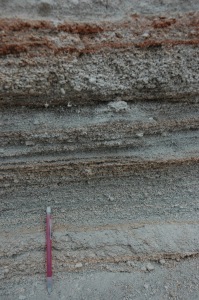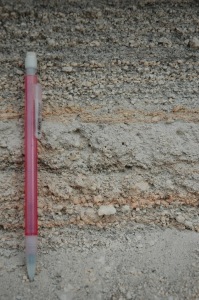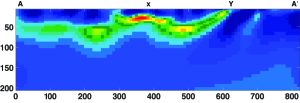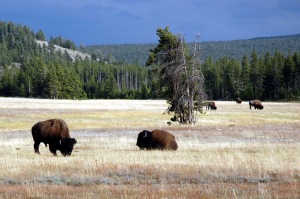 |
| The Locals |
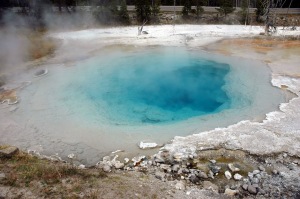 |
| The Swimming Hole |
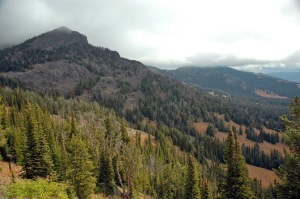 |
| The Recreation Center |
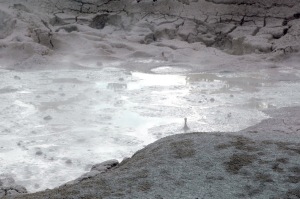 |
| The Spa |
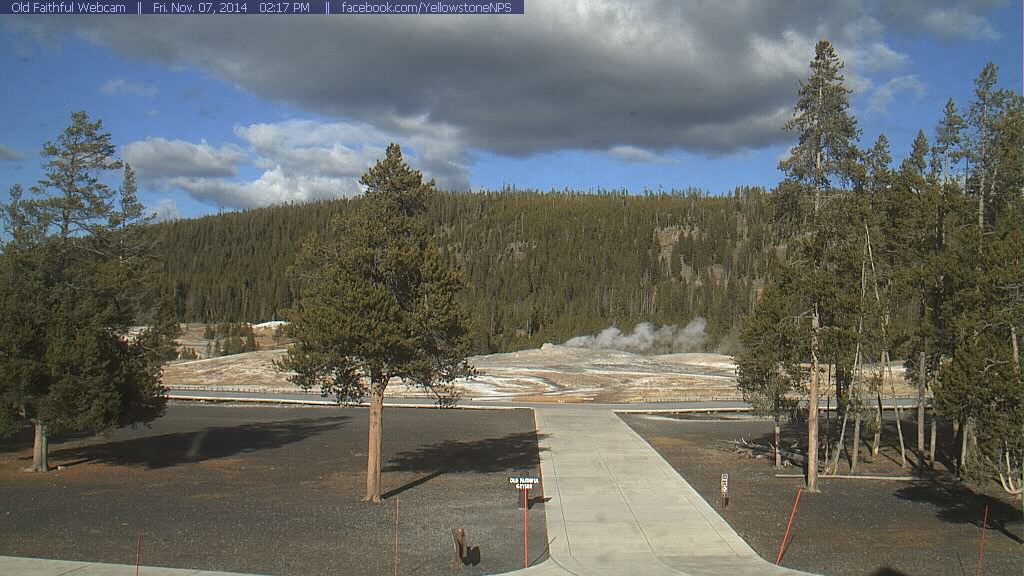 |
| A live view of Old Faithful |
Although Yellowstone National Park might seem like a nice place to spend your holiday, consider this: the entire park is more or less encompassed within the second largest volcanic caldera in the world (second only to Toba, Indonesia). At 3000 square kilometers it is nearly the size of Rhode Island. This supervolcano erupted at 2.1, 1.3, and 0.64 million years ago. These eruptions produced massive ash fall and pyroclastic deposits 280 to 2500 times larger than the 1985 eruption of Mount St Helens. The largest of these eruptions – the Huckleberry Ridge Tuff – erupted ash that cover over 3.5 million square kilometers (over five times larger than Alaska). Given the recurrence interval between 800 and 650 thousand years and since it has been over 640 thousand years since the last major eruption, it is likely we should be expecting another supervolcanic eruption in the near future. Visiting Yellowstone will potentially give you front row seats for the greatest show Mother Nature has to offer. Although if there were a major eruption while you were visiting Yellowstone you would likely be vaporized by the superheated gases of a pyroclastic cloud (a la Hollywood’s 2012 or Dante’s Peak).
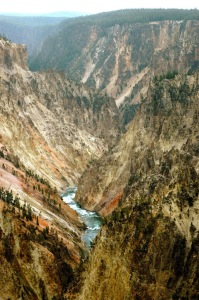 |
| The hydrothermally altered ash flows that give ‘Yellowstone’ its name |
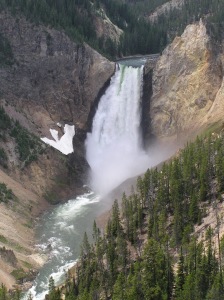 |
| Lower Yellowstone Falls (by Scott Catron) |
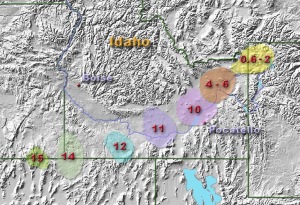 |
| Yellowstone Hotspot Track |
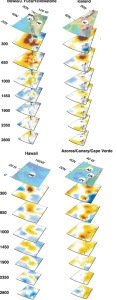 |
| Shallow or no plume (above) Deep plume (below) |
In 2004, Montelli and others wrote a paper in Science (figure to the left) outlining that some mantle plumes originate near the coure-mantle boundary although there are other plumes that originate near to the 660 km discontinuity (the depth in the mantle where the density and seismic velocity in the mantle increase due to changes in various mineral compositions). Although the 660 km discontinuity is not a thermal boundary Montelli et al. suggest that this boundary could affect mantle flow dynamics such that plumes are generated in this region.
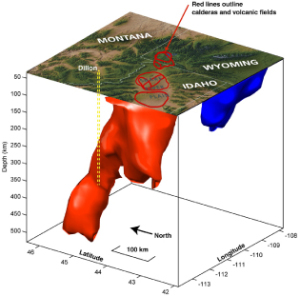 |
| Yellowstone plume beneath Montana (Pierce and Morgan) |
Although the Montelli et al. study shows some great data and interesting interpretations, not all share their opinions, especially in the case of the Yellowstone hotspot. Contrary to Montelli et al., Pierce and Morgan (2009) claim that although the Yellowstone plume is not imaged into the deep mantle, it IS well defined to 500 to 600 km. They also argue that the plume extends deeper than inferred by tomography based on the diameter of the plume head and the breadth of deformation associated with the hotspot track. They also present evidence that the Yellowstone plume interacted with the eastward subducting Juan de Fuca plate.
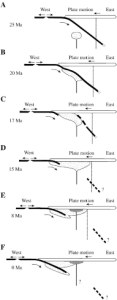 |
| Plume/Plate Penetration |
Pierce and Morgan (among many others) postulate that at ~20 Ma, the Yellowstone plume rose into and eventually pierced through the subducting Juan de Fuca plate coming to rest at the base of the North American lithosphere. Xue and Allen (2007) use this plume/plate collision to explain the abrupt termination of the present position of the Juan de Fuca plate at a depth of 450 km. Because the oceanic lithosphere of the Juan de Fuca plate was relatively cold, the plume did not penetrate immediately. Rather the subducting plate would have dragged the plume head to the east some distance before melting through the slab.
This all makes a great story. It seems to answer a lot of questions surrounding the Yellowstone plume controversy. Unfortunately, there is other work that is at odds with the conclusions of the pro-plumists. Last month in Geology, Kelbert et al. published an article that uses magnetotelluric data from the EarthScope USArray to create a 3D eletrical resistivity model of the crust and upper mantle in the Yellowstone area (see below). Magnetotellurics is a fancy way of imaging the subsurface by measuring natural variations of electrical and magnetic fields at the Earth’s surface. If there were a mantle plume (shallow or deep), we would expect to see a conduit of extremely low electrical resistivity. However, the electromagnetic data suggest there is not a plume directly beneath Yellowstone caldera. Rather there is a large shallowly dipping region of partial melt at between 30 and 60 km deep along the hotspot track that shallows beneath the Yellowstone caldera. With crustal thicknesses in the area ranging between 40-50 km, this new data infers the material sourcing the Yellowstone hotspot is restricted to the uppermost mantle and the lower crust. Although magnetotellurics have their drawbacks and limitations, it requires further explanation to the origin of the Yellowstone hotspot track and begs the question: are not all hotspots created equal? What causes some hotspots to originate at the core-mantle boundary while others begin at the 660 km discontinuity? Stranger still, what about hotspots that are restricted in the uppermost mantle and lower crust?
Electrical resistivity along a southwest-northeast cross section along the Yellowstone hotspot track from Kelbert et al., 2012. Bright colors represent zones of partial melt. Y: Yellowstone
Although answering the questions and satisfying the critics is a never-ending process at least we can have the perspective of John Muir. What a joy it is to be able to visit and work in such fabulously interesting places!
In Yellowstone, we see Nature working with enthusiasm like a man, blowing her volcanic forges like a blacksmith blowing his smithy fires, shoving glaciers over the landscapes like a carpenter shoving his planes, clearing, ploughing, harrowing, irrigating, planting, and sowing broadcast like a farmer and gardener doing rough work and fine work, planting sequoias and pines, rosebushes and daisies; working in gems, filling every crack and hollow with them; distilling fine essences; painting plants and shells, clouds, mountains, all the earth and heavens, like an artist, — ever working toward beauty higher and higher. Where may the mind find more stimulating, quickening pasturage?
John Muir, 1898
![]() This work is licensed under a Creative Commons Attribution-NonCommercial-ShareAlike 4.0 International License.
This work is licensed under a Creative Commons Attribution-NonCommercial-ShareAlike 4.0 International License.

